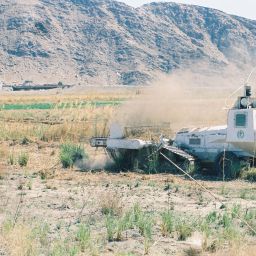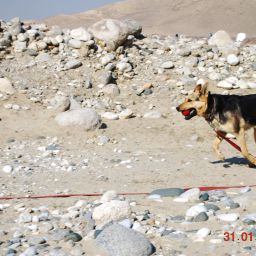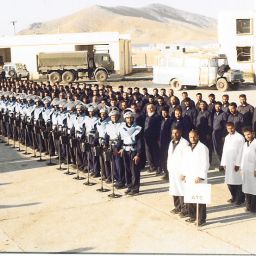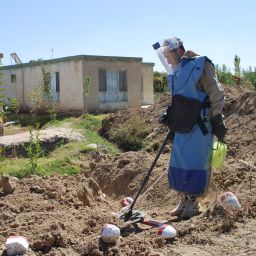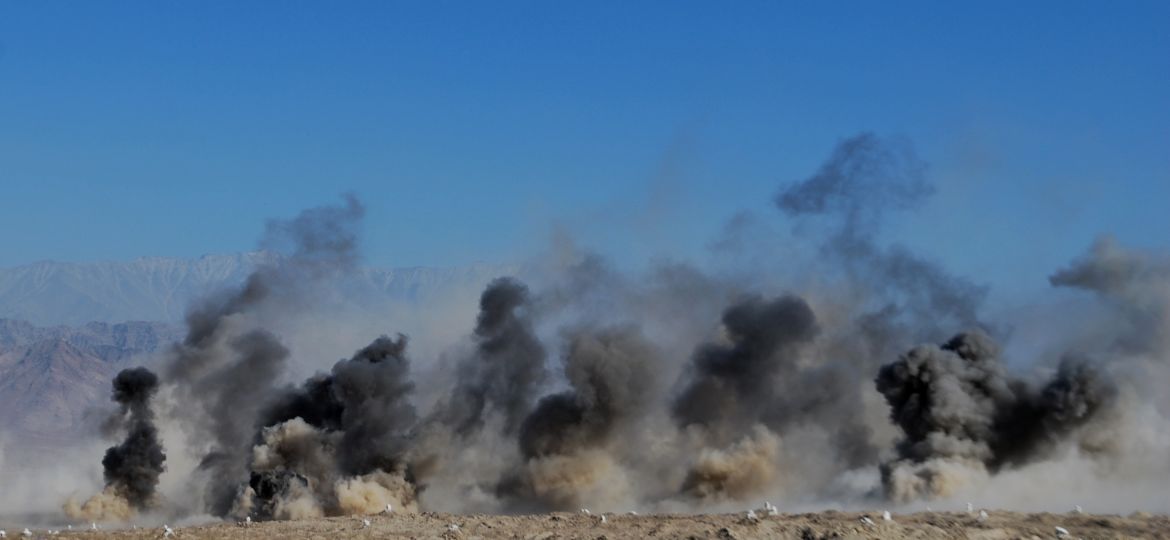
In 1993, ATC contracted a British Bomb Disposal specialist to help clear bombs and rockets scattered all over Kabul City. A team of three men was able to work in Kabul City despite fighting which continued in some areas. This team dissolved in two newly established teams of EOD and later on these two teams upgraded to six EOD teams, which nowadays are busy in cleaning of Unexploded Ordnance (UXO) all over Afghanistan.
Kabul City. A team of three men was able to work in Kabul City despite fighting which continued in some areas. This team dissolved in two newly established teams of EOD and later on these two teams upgraded to six EOD teams, which nowadays are busy in cleaning of Unexploded Ordnance (UXO) all over Afghanistan.
 Kabul City. A team of three men was able to work in Kabul City despite fighting which continued in some areas. This team dissolved in two newly established teams of EOD and later on these two teams upgraded to six EOD teams, which nowadays are busy in cleaning of Unexploded Ordnance (UXO) all over Afghanistan.
Kabul City. A team of three men was able to work in Kabul City despite fighting which continued in some areas. This team dissolved in two newly established teams of EOD and later on these two teams upgraded to six EOD teams, which nowadays are busy in cleaning of Unexploded Ordnance (UXO) all over Afghanistan.Render safe and destruction of aerial bombs, guided missiles and large unexploded ordnance etc. termed Explosive Ordnance Disposal (EOD) by EOD teams using specialized tools such as bomb locater, de-armor, rocket wrench, ballistic-disk, Charge Linear Cutting (CLC) and plastic explosives and utilizing sand-bag protective works to prevent damage or destruction of buildings in built up areas.
Battle Area Clearance (BAC) Operation:
With intense fighting in Kabul and the evacuation of Kabulis to Jalalabad, ATC used its demining teams for battle area clearance in areas surrounding the internally displaced persons camp in Jalalabad in early 1994 and later returned once again for clearance operations in Kabul. ATC established a specific Battle Area Clearance (BAC) project in Kabul City in late 1995 to assist clearing the large amount of UXOs, which caused frequent accidents.
New BAC techniques that were developed and introduced to the program have been continued. ATC BAC teams specifically worked in Kabul till mid 1999. Now, all demining teams have completed cross training in BAC and are capable in dealing with UXO types up to 150 mm while not affecting the demining operations.
Statistics show that 50% of Mines/UXO incidents occur in the civilian population rather than military personnel.


